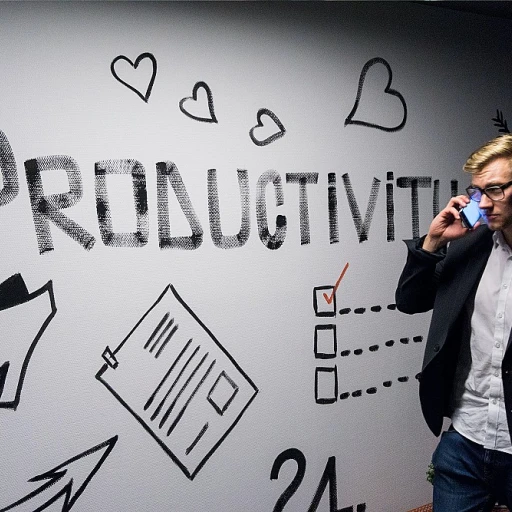
Understanding Employee Retention Programs
Demystifying the Essence of Employee Retention Initiatives
In the ever-evolving landscape of modern business, it's crucial to realize the impact of employee retention programs on the success of an organization. These initiatives go beyond mere strategies; they form an essential backbone for nurturing a committed and engaged workforce. Understanding the foundational elements of employee retention allows companies to tailor programs that resonate with their employees’ needs, ultimately reducing turnover and enhancing productivity. Employee retention programs are comprehensive plans that encompass various strategies and policies aimed at keeping talent within the organization. They focus not only on preventing costly turnover but also on improving employee satisfaction and performance. Intrinsically linked to these programs is the organization’s culture, which can significantly influence an employee's decision to stay or leave. When constructing an employee retention strategy, it’s important to first evaluate the company culture. Culture acts as the glue that holds the workplace together, creating an environment where employees feel valued and motivated. By fostering a positive company culture, organizations can create a supportive atmosphere that champions both professional growth and personal wellbeing, as explored in our detailed article on mastering employee retention strategies for success. Furthermore, retention programs need to integrate strategies that emphasize employee engagement. By implementing initiatives that boost involvement and commitment, businesses can not only retain their best talent but also encourage innovation and collaboration. Stay tuned for further insights into effective employee engagement strategies that can transform your workplace. Ultimately, balancing work-life demands and mental health support is another crucial pillar of retention programs. Understanding the challenges employees face and providing the necessary resources and flexible work arrangements can significantly enhance job satisfaction and loyalty. Our ongoing series will delve into how companies can optimize these aspects to maintain a healthy, harmonious workforce capable of achieving its full potential. Effective strategies for keeping your best employees are within reach, and by unlocking the secrets of successful employee retention programs, you will equip your company with the tools needed to thrive in today's competitive market.The Role of Company Culture in Retention
The Influence of Workplace Atmosphere
Company culture plays a pivotal role in retaining employees, acting as the backbone of a successful retention strategy. A positive workplace atmosphere not only attracts top talent but also keeps them engaged and motivated. When employees feel valued and part of a supportive community, their loyalty to the organization strengthens significantly.
Creating an environment where open communication, mutual respect, and shared values are prioritized can lead to higher job satisfaction. This, in turn, reduces turnover rates and fosters a sense of belonging among team members. It's essential for companies to regularly assess their cultural dynamics and make adjustments to ensure alignment with employee expectations and organizational goals.
Moreover, a strong company culture can enhance employee engagement, a topic we delve into further in our discussion on strategies to improve engagement. By cultivating a culture that encourages innovation and recognizes achievements, businesses can effectively boost morale and productivity.
For those looking to deepen their understanding of how to harness company culture for retention success, exploring mastering employee retention strategies for success can provide valuable insights and practical approaches.
Strategies to Improve Employee Engagement
Boosting Employee Engagement for Greater Retention
Engagement is more than a buzzword; it's a key element in employee retention strategies that bridges the gap between company policies and individual motivation. The essence of engagement lies in making employees feel valued, heard, and motivated to contribute their best efforts towards the organization’s goals. A great starting point to enhance employee engagement is by fostering open communication and creating channels where employees can voice their opinions and concerns. This leads to a sense of belonging and trust, as employees feel that their views are not only heard but acted upon. Implementing regular feedback loops, such as one-on-one meetings and satisfaction surveys, can greatly influence how connected employees feel to their work and the company. Investing in professional development opportunities also plays a significant role. Providing training, workshops, and learning opportunities not only enhances their skills but also signals that the company is invested in their personal growth. This not only boosts engagement but also cultivates a highly skilled workforce. Moreover, recognizing and rewarding employee achievements is an effective way to bolster engagement. Acknowledgment can come in various forms, whether it’s through formal recognition programs, bonuses, or even a simple 'thank you'. Consistent appreciation and reward systems affirm the efforts and dedication of employees, spurring them to maintain or even exceed their current levels of commitment. These strategies, when effectively implemented, create an environment where employees feel engaged and valued. By weaving these engagement practices into the fabric of your company's culture, you create a sustainable model for retaining talent and driving organizational success.Balancing Work Life and Mental Health
Creating a Harmonious Work-Life Balance
In the pursuit of effective employee retention, one cannot overlook the significance of balancing work life and mental health. The modern workplace is evolving, and so are the expectations of employees. Today's workforce values flexibility and well-being as much as traditional incentives like salary and benefits.
When companies prioritize mental health and work-life balance, they create an environment where employees feel valued and supported. This approach not only enhances job satisfaction but also boosts productivity and loyalty. Employees who are able to maintain a healthy balance between their professional and personal lives are less likely to experience burnout, which is a significant factor in turnover.
Implementing Flexible Work Arrangements
One of the most effective strategies to promote work-life balance is offering flexible work arrangements. This can include remote work options, flexible hours, or compressed workweeks. By providing these options, companies demonstrate trust in their employees and acknowledge the diverse needs of their workforce.
Flexible work arrangements are particularly appealing to employees who have family commitments or other personal obligations. When employees have the autonomy to manage their schedules, they are more likely to remain committed to their roles and the organization.
Promoting Mental Health Initiatives
Beyond flexibility, promoting mental health initiatives is crucial. Companies can offer resources such as counseling services, mental health days, and wellness programs. Encouraging open conversations about mental health and reducing stigma in the workplace can also foster a supportive environment.
Investing in mental health not only benefits employees but also the company as a whole. A workforce that is mentally healthy is more engaged, creative, and resilient, contributing to the overall success of the organization.
As discussed in previous sections, company culture plays a pivotal role in retention. A culture that genuinely cares about employees' well-being will naturally integrate these practices, leading to higher retention rates and a more motivated workforce.





